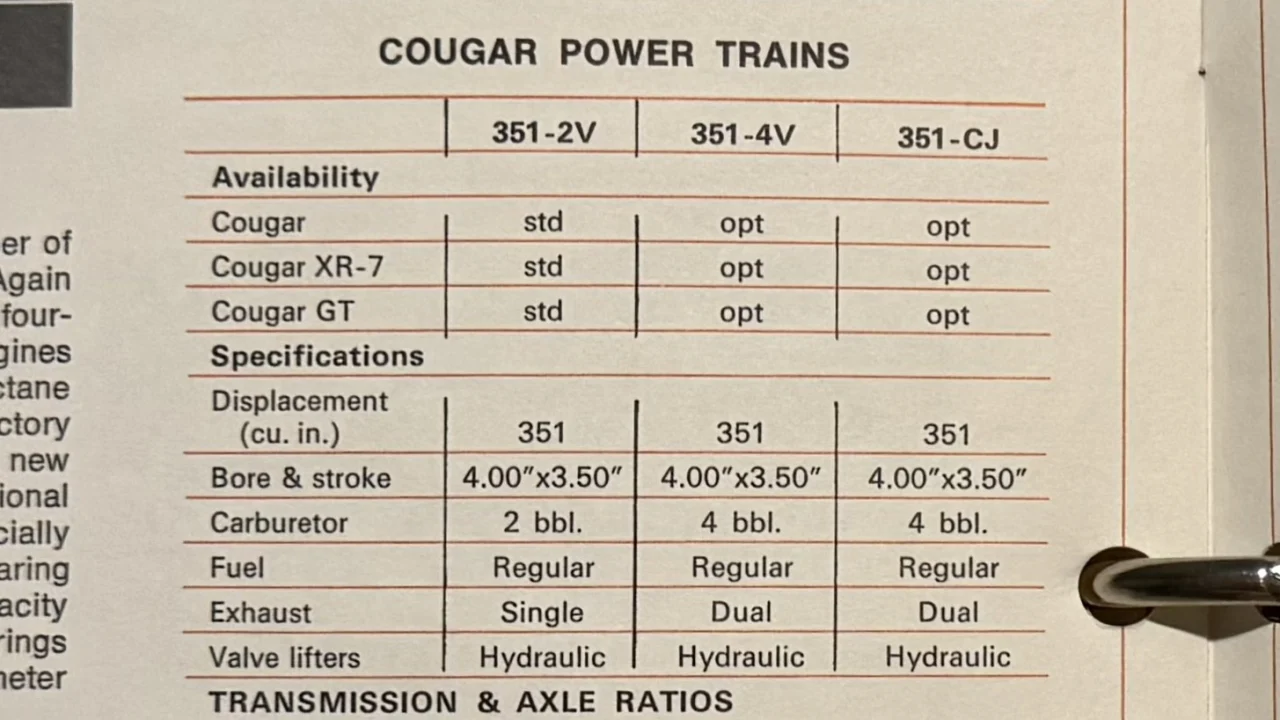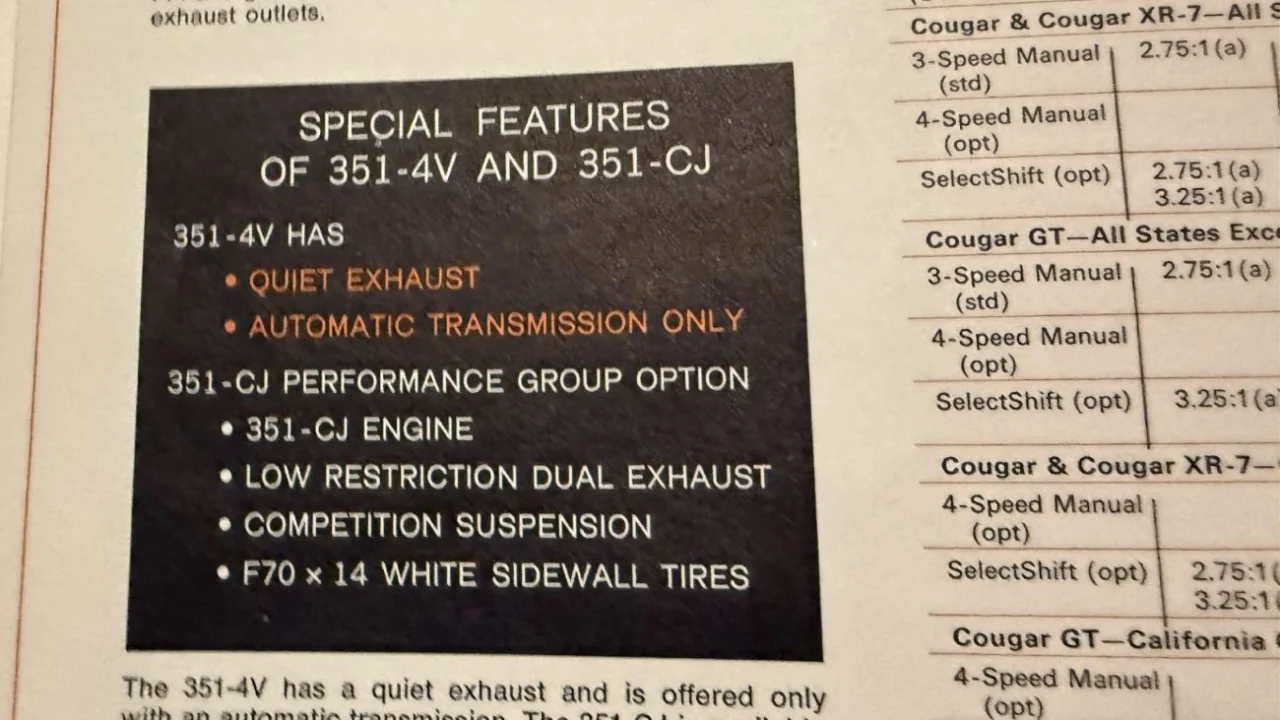Nineteen seventy-two was a humdinger in Detroit, and no manufacturer felt it more than Ford Motor Company. Over the previous two years, Ford was replete with high-performance engines measuring 302, 351, and 429 cubic inches, but for 1972, Ford Motor Company was left with a 351 four-barrel as its peak engine. Mercury offered one version for the Cougar that was not available anywhere else.
What happened to the 429 Cobra Jet? Discontinued. What about the 429-4V? Ford didn’t even try, going from 360 gross to 206 net horsepower. Big-block horsepower was dead in Dearborn, while Highland Park continued to offer a relatively potent 440 and all four General Motors performance brands could name LS5, HO, W30, and Stage 1 in their rosters.

The performance engines that Ford Motor Company offered for 1972 are interesting. The standard performance 351 was called the 351 Cobra Jet, defined by a “Q” as the fifth character of the VIN. It was a mid-year addition in 1971, a low-compression companion to the standard 351-4V that ended up usurping it as part of the new values imposed upon Detroit by the District of Colombia. For 1972, this engine was rated at 266 net horsepower for the Mustang and 246 for the Torino and Montego (though I can’t say if there’s much, if any, difference between the two).
Then there was the 351 HO, a remnant of the Boss 351 that only appeared between the shock towers of the Mustang. This truly was a glorious engine, on par with big-blocks at the time, but only 398 were built, so little impact was made.
So what about the Cougar?

Interestingly, the Cougar offered two versions of the Q-code 351 four-barrel—something distinct from other products in the FoMoCo portfolio. To a modern mind, asking the question, “Why would Mercury go through the expense of offering two distinct engines that shared 98 percent of the same parts?” seems like an appropriate query, but let’s not forget that the Cougar, while still a pony car, had been moving into the realm of personal luxury. For the Cougar’s target market, the upgrade from the standard 351-2V—the 351 Cobra Jet—may have been a bit too unfettered for their tastes, so Mercury offered a toned-down version called the 351-4V that was only offered with an automatic transmission with a 12-inch converter and “quiet exhaust.” Horsepower was 262, a loss of four.

If you wanted the high-performance 351 Cobra Jet, you had to order the 351 Cobra Jet Performance Group to trigger the engine upgrade and equipment. Ordering the package scored you a low-restriction exhaust system, Competition Suspension, F70 x 14-inch whitewalls, and a 10.25-inch converter for automatic-equipped vehicles.
If you’re interested in knowing how many Cougars were produced with the 351 Cobra Jet, we can provide that answer thanks to Marti Auto Works.
| Car | Q-code 351-4V | Q-codes with CJ Package |
| Cougar Hardtop | 566 | 207 (including 66 four-speeds) |
| Cougar Convertible | 69 | 20 (including 5 four-speeds) |
| Cougar XR-7 Hardtop | 2,557 | 877 (including 156 four-speeds) |
| Cougar XR-7 Convertible | 368 | 137 (including 32 four-speeds) |

